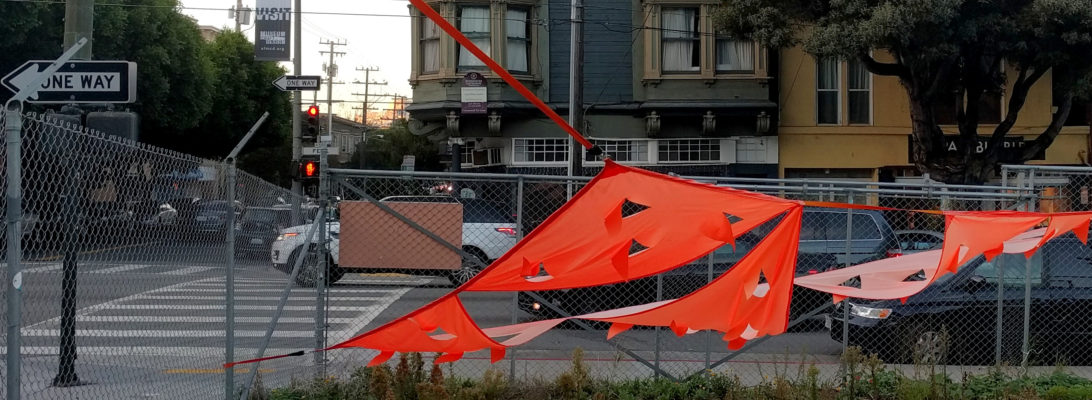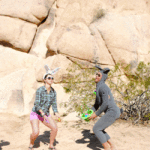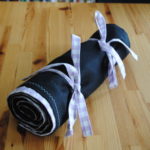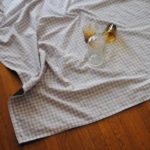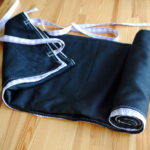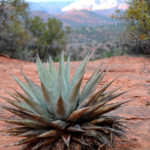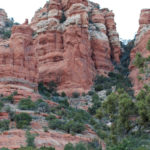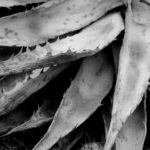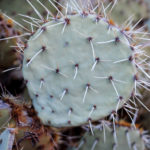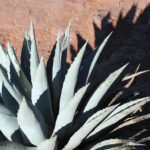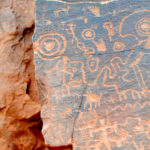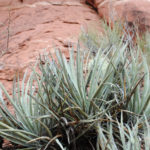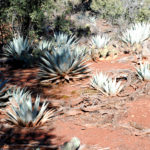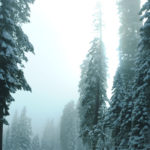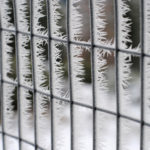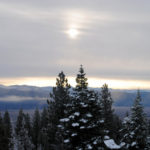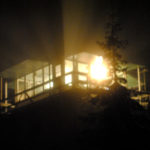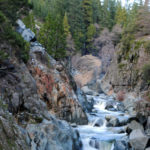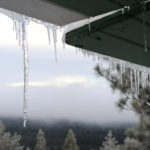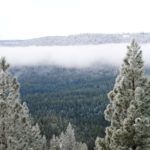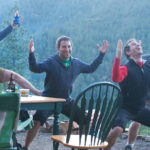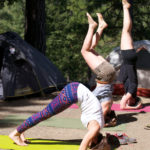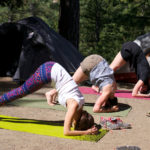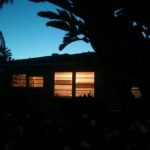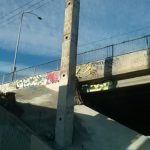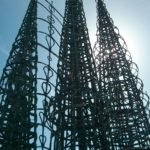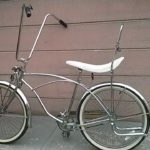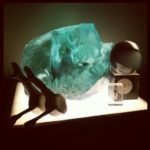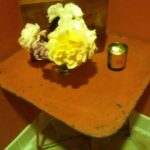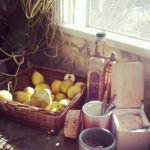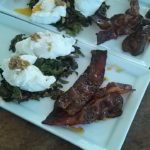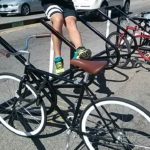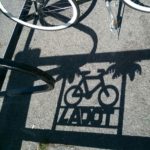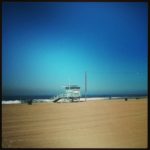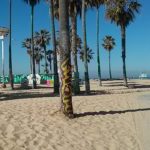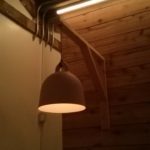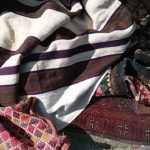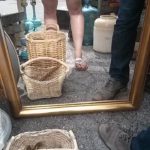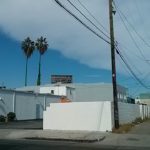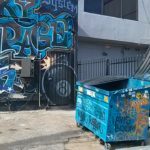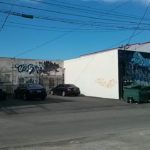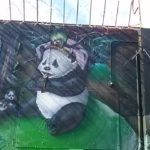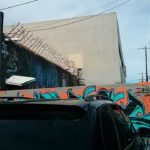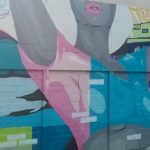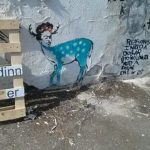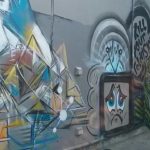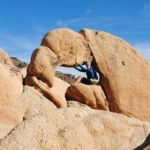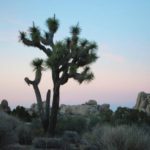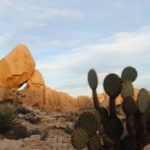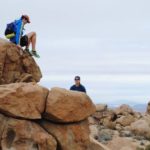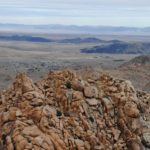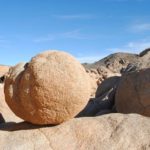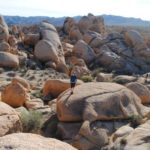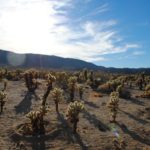happy easter from joshua tree
travel
DIY Upcycled Travelling Picnic Blanket
Its summer, which means its time to sit outdoors quaffing beer and delicately spearing olives with a toothpick. The challenge is getting comfortable on hot sand, pigeon-y urban concrete, scratchy drought-dried grass (for us Californians) and splintery decks. The answer is a cute, compact picnic blanket that rolls into a neat little burrito (and can even be tied onto your bike’s crossbar) and costs just about $4 to make. Your local thrift store or Goodwill has this strange section no one ever goes to, full of household linens. Score yourself a cute curtain or sheet for a liner and a thicker blanket or curtain for the bottom side and you’ve got yourself fifty percent of the way to this DIY picnic blanket. Head over to Inhabitat to read the whole step-by-step instructional by yours truly!
A stunningly washed out palette from my trip to Arizona for Christmas. We packed up the car after a Christmas morning brunch of lox bagels over gift opening and drove for hours and hours through the central valley of California. Eating kettle corn for dinner and arriving at our overnight destination of the Mojave Desert for an extremely cold, extremely windy night in the back of the Xterra.
Bright and early the next morning, we headed out what must be a running contender for one of America’s loneliest highways, headed for Sedona, Arizona. Across the Colorado River and through some stunning desert rocky landscapes, we were disappointed to start driving through snow, and even colder temps, as we approached Flagstaff. Driving 16 hours south from San Francisco netted us a nice 30 degree temp drop.
Arrived in Sedona, Arizona with only a couple hours to spare before winter’s early night, and made a quick loop of some red rock hiking trails, marvelling at the bright red soil and assortment of prickly evil botanicals lining the paths.
Amongst mountain biking (scary, fun, and dangerous all together – an entirely new experience for this very experienced cyclist) and eating (in Sedona, a totally disappointing experience in every way), and we made time to visit various historical and cultural monuments. Learning about the history, culture, and human landscapes of the Verde Valley was fascinating.
Even something as simple as a cluster of agave plants might, possibly, be impacted by humans having cultivated these extremely slow-growing edibles – hundreds or even thousands of years ago. We learned that various groups of people living in the area over the past had used agave not only for fiber, but for food – the plant stores its sugary reserves in a central core for years or decades before expending all of its food energy into creating one gigantic flower stalk – then it dies. We saw remains and evidence of agave roasting pits at several of the historical cliff dwelling sites we visited, and learned that the sugary pulp was dried after roasting and extraction – and tiny balls of fiber indicate human inhabitation (people chewed on the “agave leather” and spit out the fibers, much like mango fiber, afterwards).
The prickly pears were nearly ubiquitous, making sitting, biking,and hiking an experience of avoidance. They, too, are edible, but must first be de-spined before eating their rubbery, moist interiors (sounds terrible but the have the texture of a cooked pepper or softened cucumber which is actually refreshing and juicy).
The petroglyphs (chipped into stone) and pictographs (created with mixtures of pounded colored minerals and animal fat) we were able to view were fascinating. Of course, no one know for sure what any of them mean, so most often, we hear a lot about “ritual uses”. Makes you wonder what future archaeologists will say about us (which reminds me, also, of this wonderful book from my childhood school library: “Motel of Mysteries” by David Macauley, in which a future Howard Carson excavates a motel from the 1980s, drawing bizzare conclusions about the ritual uses of the toilet.)
Nonetheless, it was amazing learning about not only the art, but also the cliff dwellings and masonry structures built by these ancient peoples, especially when we learned they did not have metal – everything was created by hand, stone-on-stone, using stone to break other stones, and so forth. The area seems a tough place to settle and make a civilization – super dry, very cold in winter, extremely hot in summer, little vegetation (at least, that which is not covered in thorns and spines), yet this area held the clues to at least several passing civilizations and a trading center. The most interesting and mysterious artifacts were seashells used as decorations, and imagining how those could have been traded, by foot (pre-horse), hundreds and thousands of years ago.
A sweet wintry photoset from the Sierras this December. Little snow cover on the ground, hiking in to a fire tower to spend two toasty nights. Waking up to creaking ice on the wooden roof and delicate hoarfrost crystals on the catwalk. Jeffrey pines encrusted in frost, mysterious valley fog rising up to cover the view of the fields and valleys below. A rushing stream flows over and under the Pacific Crest Trail.
First informal “yoga teaching” moment. Later, the boys and their take on Goddess Pose. #shortsandjackets
LAdventures – breakfast in Venice, maple rosemary bacon with kale , triple cream and poachies, decor at Smoke Oil + Salt, crystal and whalebone decor, Watts Towers, lowrider, new custom shelving with maple and iron, cityscapes.
Los Angeles Adventuring with Foraging Fork –Venice Beach, Melrose Flea, upcycled fashion, textiles galore, Heath Ceramics lighting at Superba, bike rack outside G.I.A.
LArt
A mini capture of the last two months. Sadly, 90% at work, in the office, stressing out. In the dark. Luckily, some key weekend trips and fun DIY Christmas projects to lend some light and reality to life.
Joshua Tree – Thanksgiving 2013. Cholla, Joshua Trees, Yuccas, Beavertail Cactus, Barrel Cactus, Creosote Bush, Birds, Jackrabbits, Quail, Ocotillo, Pine, Juniper, and lots of granite. No coyotes, lizards, bunnies, or bugs this time .
